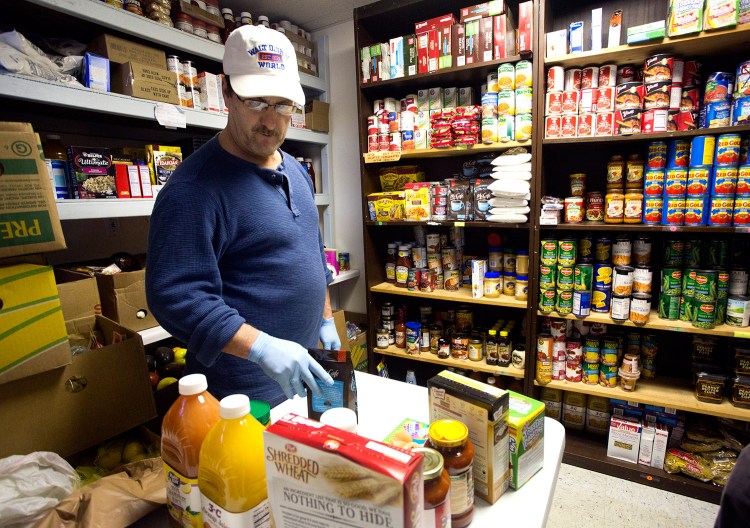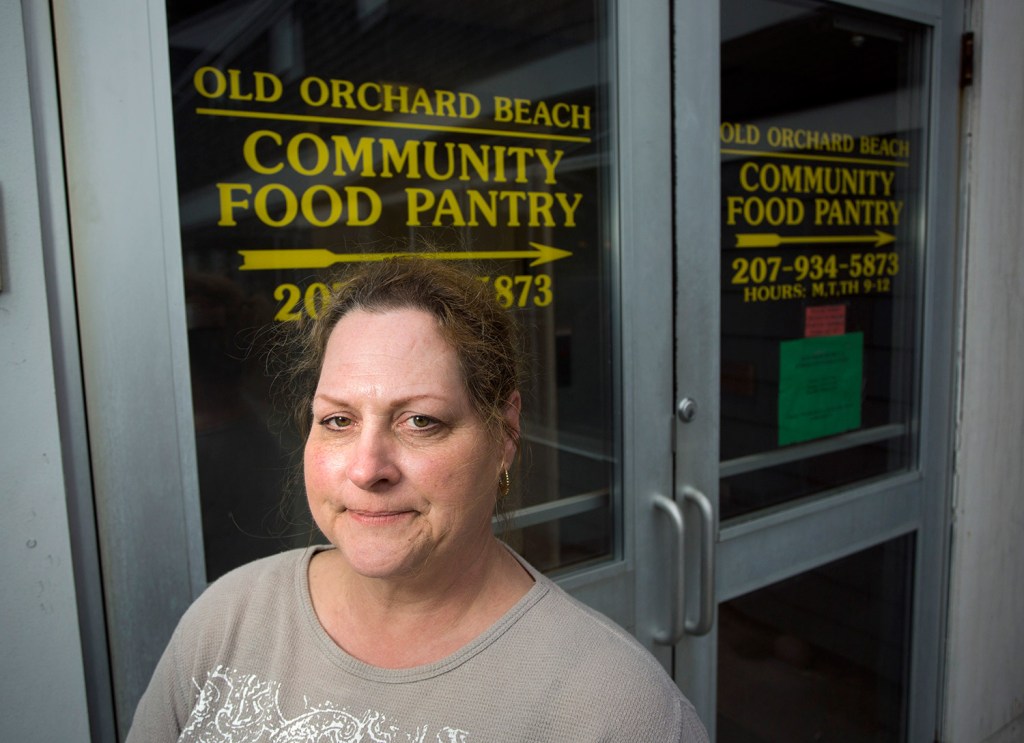Food Rescue of York County, a nonprofit that provided more than 1 million pounds of food a year to needy families in York County, has abruptly shut down its operations.
Karen Boisvert, chairwoman of the board of directors, said the organization had to close after losing access to three-quarters of the food it distributed to more than 45 food pantries and meal programs in York County.
“It is regrettable, and a sad day for so many,” Boisvert said in a news release Friday.
The organization lost a state contract to distribute food from the U.S. Department of Agriculture, which accounted for 45 percent of its food, and it lost another 30 percent of its food when a Shaw’s supermarket warehouse in Wells moved its frozen food operations out of state, Boisvert said.
After that, “we knew we had an uphill battle to replace those losses,” she said. “Ultimately, we could not, and, with monetary donations down as well, it was decided that we were no longer viable and would need to close our doors.”
The board of directors of Food Rescue is working to discontinue the nonprofit organization in the coming weeks, Boisvert said in the release. She did not respond to an email requesting additional comment.
Jodi Bissonnette, Food Rescue’s executive director, did not return phone calls Monday requesting comment.
Food Rescue of York County had faced funding problems for years. In 2013, it was forced to find a new location after it was evicted from the Sanford warehouse it had occupied rent-free. A year later, the group nearly ran out of money and had to ask for emergency donations to stay open.
‘BIG IMPACT’ ON SMALL PANTRIES
The announcement that Food Rescue had closed caught food pantries in the county by surprise, and could deal a blow to small pantries that depend on the free food it provided.
“It’s going to be a big impact on every pantry in this area, a major impact,” said Carol Davis, who runs the Old Orchard Beach Community Food Pantry, which feeds about 550 people a week from its Saco Avenue location. The dry goods, dairy, produce and frozen items from Food Rescue made up a quarter of the food her group gives out, Davis said.
“We’re kind of reeling, and we want to know how this happened,” she said. Her program paid Food Rescue $150 a year for the monthly delivery service, and the food especially helped when the pantry was running low on products it received from other donors or from the Good Shepherd Food Bank in Auburn, Davis said.
“None of us can see why this would happen, this was such a needed service,” Davis said. Despite the loss, she has gotten used to running a shoestring operation, so she’s confident that her pantry will pull through, Davis said. “We have done so many different ways of keeping the shelves filled here.”
Almost half of the products Food Rescue of York County provided were from The Emergency Food Assistance Program. Through the program, the USDA buys food and distributes it through state agencies, which contract with local service providers to get the food to needy people.
Clara Whitney, a spokeswoman for Good Shepherd Food Bank, said that in September Good Shepherd won a contract from the Maine Department of Agriculture, Forestry and Conservation to administer the program statewide, replacing a network of smaller agencies that had provided the service.
Before taking over the full contract last year, Good Shepherd handled products for York County, but brought them to Food Rescue to distribute to local food pantries. Now, Good Shepherd Food Bank is also handling distribution, Whitney said.
The change should not affect local food pantries, which will continue to receive monthly deliveries of food at no cost, she said. Good Shepherd Food Bank provides 208,000 pounds of food a year from The Emergency Food Assistance Program to agencies in York County.
“Our understanding is that nothing is changing,” Whitney said. “There are no changes that we know of for local pantries.”
Good Shepherd does, however, charge food pantries fees for costs associated with the delivery of food that it receives apart from the federal program.
Shaw’s spokeswoman Teresa Edington said the company converted its distribution center in Wells from a frozen to a dry storage facility last month and over the last 18 months about 80 percent of the donations it made were dry goods, while the rest was frozen food. When the warehouse converted, it no longer had frozen food to donate, she said.
“While we were sad to learn of the closing of Food Rescue of York County, we will ensure that these dry grocery donations will continue with another one of our food bank or pantry partners in the state,” Edington said.
‘THE END OF AN ERA’
A volunteer-run emergency food system in York County provides food for about 27,000 people, including children, senior citizens and veterans “who have fallen through the cracks as nutrition assistance programs are cut,” said Kristine Jenkins, the coalition director for Partners for a Hunger-Free York County. Her organization is pulling together a group to talk about providing support to the pantries and meal programs affected by the program’s shutdown.
“Food Rescue’s closing really does represent the end of an era for distribution of completely free food to pantries in Maine,” Jenkins said.
The food that Good Shepherd Food Bank distributes comes with a cost to cover its overhead like transportation, storage and administration, and food pantries can wind up paying from 16 cents to a dollar per pound, depending on the type of food, said Bob Dawber of York County Shelter Programs in Alfred. Food Rescue of York County collected and distributed food at no cost.
Large programs, like Dawber’s operation, probably won’t be severely affected by Food Rescue’s closing, but the loss could leave small community pantries struggling.
Mark Elliot, a pastor at Hillside Chapel in Arundel, said the service provided about half of the food the church’s small pantry needs. The pantry is open every Sunday and gives food out to around 220 people a month, and more during the holiday season, Elliot said.
“We’re just going to have to get the word out that we need more funding,” he said. “Once we get to the point where we don’t have enough food, we are going to have to cut back.”
Send questions/comments to the editors.




Success. Please wait for the page to reload. If the page does not reload within 5 seconds, please refresh the page.
Enter your email and password to access comments.
Hi, to comment on stories you must . This profile is in addition to your subscription and website login.
Already have a commenting profile? .
Invalid username/password.
Please check your email to confirm and complete your registration.
Only subscribers are eligible to post comments. Please subscribe or login first for digital access. Here’s why.
Use the form below to reset your password. When you've submitted your account email, we will send an email with a reset code.